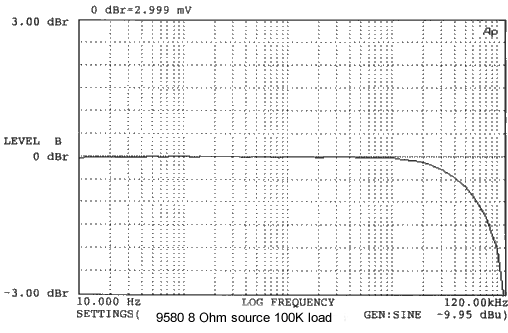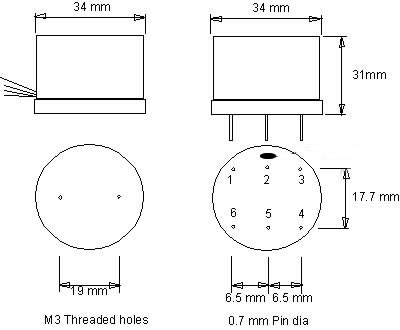
Typical response 8 Ohms source 100K Ohms load.


Typical response 8 Ohms source 100K Ohms load.
| RATIO | 1:10 |
| DISTORTION at 50 Hz (Source 6 ohms) | 0.05% |
| PRIMARY INDUCTANCE | 1.9 H approx |
| TOTAL DCR (Referred to secondary) | 1600 Ohms approx |
| FREQUENCY RESPONSE 8 ohm source 100 K ohm load | +/- 1.0 dB 5 Hz to 100 kHz |
| INSERTION LOSS 100 KOhm load | <2% |
| NOTE The cartridge should be connected to the White and Yellow leads. The amplifier should be connected to the Pink and Mauve leads. The Black (ground) lead is normally connected to the signal ground of the amplifier. You may need to experiment with different ground connection points to minimize hum. | |

